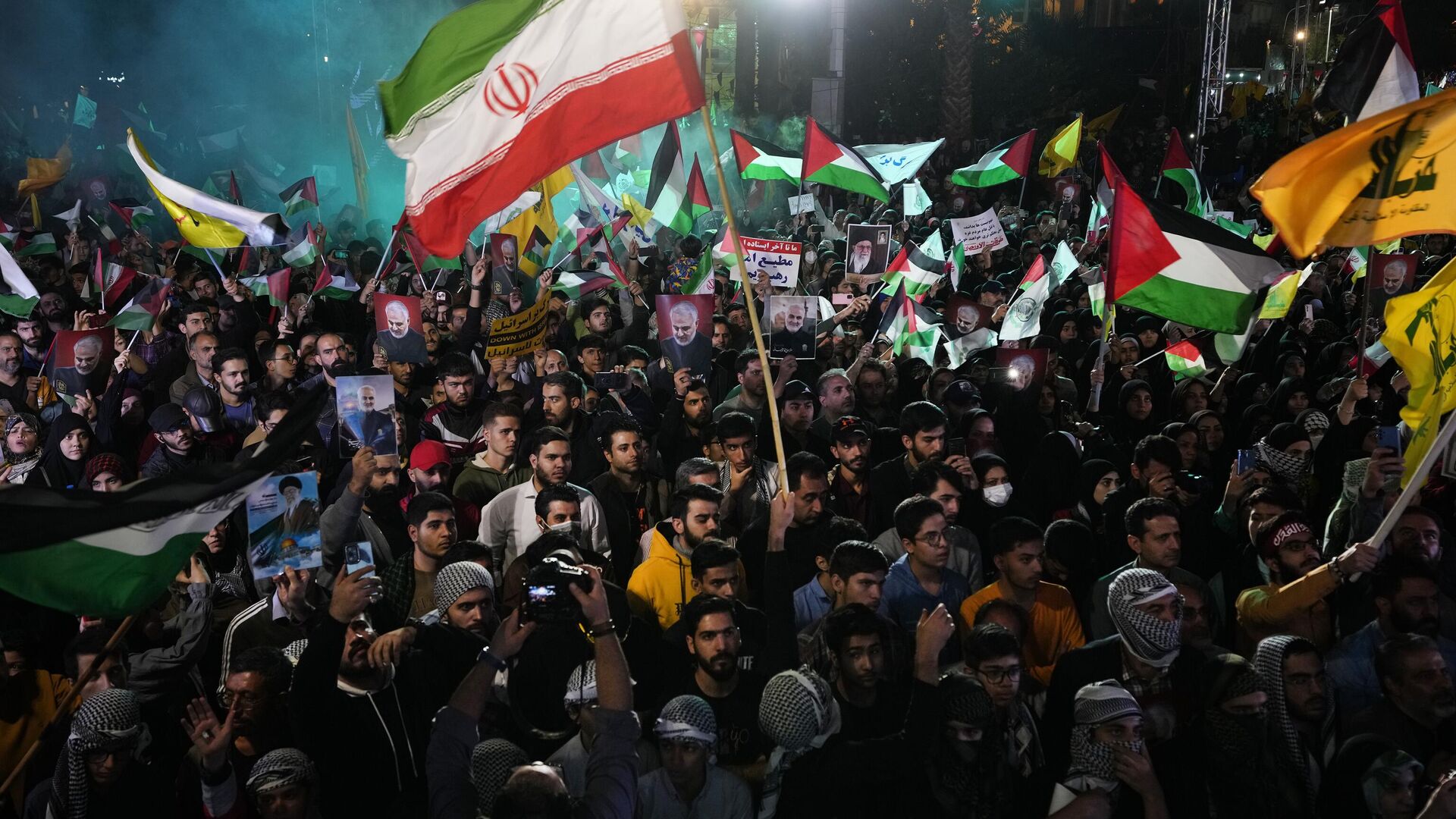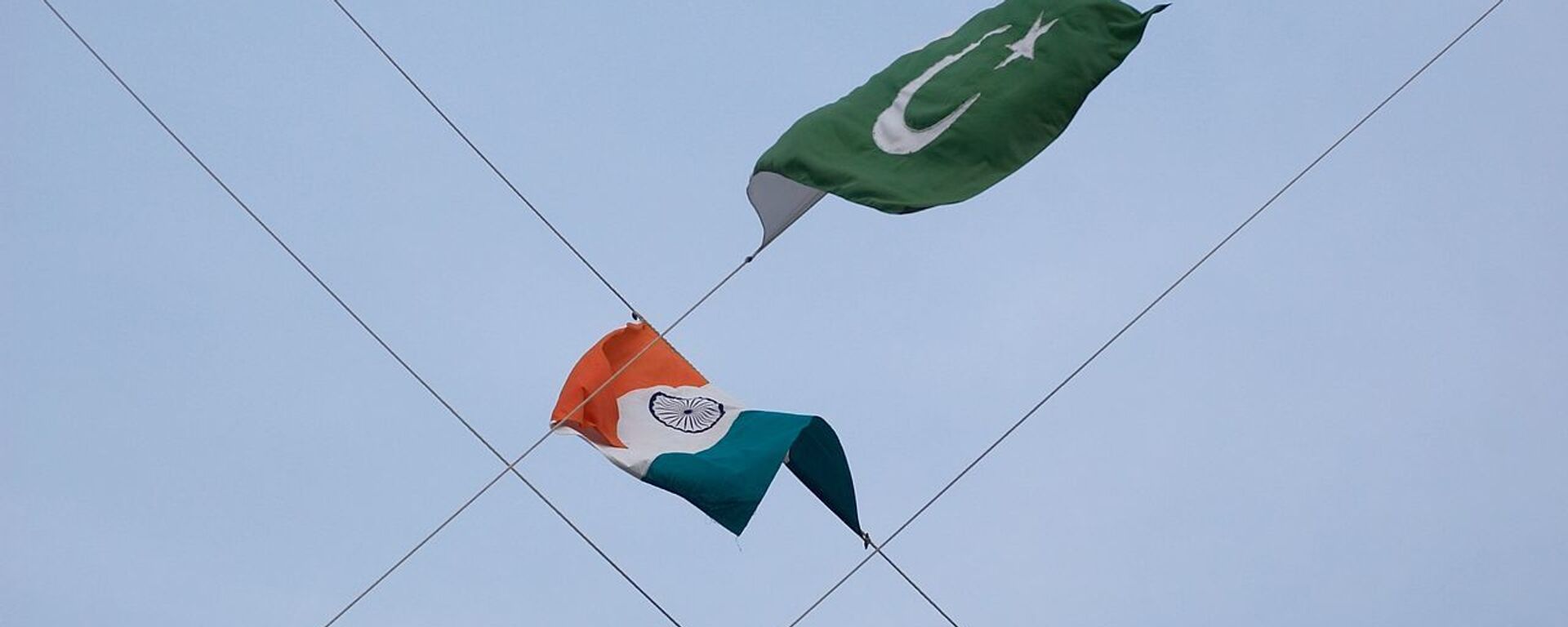https://sputniknews.in/20240406/irans-conundrum-long-fight-against-us-proxies-in-south-asia-7056505.html
Iran's Conundrum: Long Fight Against US Proxies in South Asia
Iran's Conundrum: Long Fight Against US Proxies in South Asia
Sputnik India
Recent terrorist attacks in Iran, which killed at least 27 people, including 11 security forces, have worsened tensions in the Middle East.
2024-04-06T17:58+0530
2024-04-06T17:58+0530
2024-04-10T16:26+0530
terrorism
ebrahim raisi
iran
cia
mossad
tehreek-e-taliban pakistan (ttp)
afghanistan
pakistan
sputnik opinion
https://cdn1.img.sputniknews.in/img/07e7/0b/02/5210444_0:160:3072:1888_1920x0_80_0_0_c3350a5060fe61ace576ee11a7e2aee8.jpg
For years, Iran has claimed that terrorists find a safe haven in Pakistan, operating from Pakistani territory. In January, Iranian forces conducted air strikes in Balochistan, a western region of Pakistan, in an effort to dismantle a Jaish al-Adl sanctuary.As a result, this strained the relationship between Pakistan and Iran. Although Pakistan is also grappling with militant groups such as the Baloch Liberation Army (BLA) and Tehrik-e-Taliban Pakistan (TTP*), it accuses Iran and Afghanistan of supporting these groups.Iran also claims that Jaish al-Adl is funded and supported by the CIA and Mossad to destabilise the country through proxy wars, as per Iranian state news. An Israeli strike on Iran's Consulate in Damascus, Syria resulted in the deaths of two generals and five other officers.This sequence of events, from proxy wars through non-state actors in Iran's south-eastern province of Sistan and Baluchestan to direct airstrikes on Iran's Embassy in Syria, suggests interconnected puzzles. All in all, Iran's President Ebrahim Raisi and other Iranian leaders have vowed retaliation for Israel's apparent attacks.US Proxy War Against IranA leading UK media outlet reported that the US was covertly providing support to militant ethnic separatist groups in Iran, aiming to exert pressure on the Islamic Republic to abandon its nuclear program. The Kurds in the west, the Azeris in the northwest, the Ahwazi Arabs in the southwest, and the Baluchis in the southeast have carried out these activities. The funding for their separatist causes originates directly from the CIA's classified budget, although it is now considered "no great secret", as stated by a former high-ranking CIA official in Washington.In this regard, various countries in the region are allying with the US to destabilise or force Iran to bow down. However, after arresting Abdolhamid Rigi, the leader of Junduallah, who was caught by Pakistani forces and handed over to Iran’s government in 2009, the Junduallah religious militant organisation has now been dismantled, but Jaish al-Adl has taken its place.Chessboard of South AsiaMany regions of the world are currently grappling with terrorism, violence, and socio-political instability, largely due to the leadership of the US. As former Iranian President Hassan Rouhani remarked, "Globalisation has revealed that we are all in the same boat, and without wise captains, we will all suffer in the storm".The US and Israel widely consider Iran a major adversary, and Tehran often links any actions against it to the CIA and Mossad. These hybrid wars have led to suffering among the people, particularly in South Asia, where trust issues have already arisen. The blame game among Pakistan, Iran, Afghanistan, and India has only served to empower non-state actors and Western countries.He further added, "It is undeniable that the instability in Afghanistan poses a significant challenge for the entire region. The irony is that the American invasion has contributed to the emergence of various militant groups in the area, and in this regard, utilising the sectarian rivalry between Saudi Arabia and Iran has also played a crucial role".Who is Behind the Curtain of Terror?As per a Khorasan Diary report, in February, the Afghan interim government announced a $35 million investment in Iran's Chabahar Port to reduce reliance on Pakistani ports amid tensions between Afghanistan and Pakistan. India has also been a strong supporter of the Chabahar Port project since 2016, investing $500 million to enhance regional trade and connectivity with Afghanistan.However, there are rumours circulating on social media indicating a possible alliance between Pakistan-based religious militants and the US against Iran. In 2007, former US Vice President Dick Cheney reportedly discussed Jundullah's campaign against Iran with then-Pakistani President Pervez Musharraf. When asked, a representative of Cheney declined to comment, while a CIA official disputed the ABC report.Due to these militant strikes, Iran and Pakistan have harboured mutual suspicion.He further explained, "An example of this is the recent attack that resulted in the deaths of 11 Iranian border guards. An earlier attack on January 2024 also led to the exchange of missiles between Iran and Pakistan. Both countries have hastened to mend fences".He fruther added, "But it's not just about geography. These countries have a long history of bickering and mistrust, like siblings who can't share a toy. This simmering suspicion makes it hard for them to work together on security issues. Each nation worries about its own backyard, eyeing its neighbors with suspicion."Today, in Iran, massive nationwide protests were organized with the slogans of "death to Israel".*banned terrorist group**under UN sanctions
https://sputniknews.in/20240403/road-to-reconciliation-pakistan-eyes-restoring-india-ties-despite-diplomatic-strains-7028125.html
iran
afghanistan
pakistan
Sputnik India
feedback.hindi@sputniknews.com
+74956456601
MIA „Rossiya Segodnya“
2024
Muhammad Sharif
https://cdn1.img.sputniknews.in/img/07e7/0b/05/5257054_0:0:443:444_100x100_80_0_0_b8bd2af32be62a6eecdb4a84c7fd978f.jpg
Muhammad Sharif
https://cdn1.img.sputniknews.in/img/07e7/0b/05/5257054_0:0:443:444_100x100_80_0_0_b8bd2af32be62a6eecdb4a84c7fd978f.jpg
News
en_IN
Sputnik India
feedback.hindi@sputniknews.com
+74956456601
MIA „Rossiya Segodnya“
Sputnik India
feedback.hindi@sputniknews.com
+74956456601
MIA „Rossiya Segodnya“
Muhammad Sharif
https://cdn1.img.sputniknews.in/img/07e7/0b/05/5257054_0:0:443:444_100x100_80_0_0_b8bd2af32be62a6eecdb4a84c7fd978f.jpg
iran-paksitan, pak-iran, israel-iran war
iran-paksitan, pak-iran, israel-iran war
Iran's Conundrum: Long Fight Against US Proxies in South Asia
17:58 06.04.2024 (Updated: 16:26 10.04.2024) Recent terrorist attacks in Iran, which killed at least 27 people, including 11 security forces, have worsened tensions in the Middle East.
For years, Iran has claimed that terrorists find a safe haven in Pakistan, operating from Pakistani territory. In January, Iranian forces conducted air strikes in Balochistan, a western region of Pakistan, in an effort to dismantle a Jaish al-Adl sanctuary.
As a result, this strained the relationship between Pakistan and Iran. Although Pakistan is also grappling with militant groups such as the Baloch Liberation Army (BLA) and Tehrik-e-Taliban Pakistan (TTP*), it accuses Iran and Afghanistan of supporting these groups.
Iran also claims that Jaish al-Adl is funded and supported by the CIA and Mossad to destabilise the country through proxy wars, as per Iranian state news. An Israeli strike on Iran's Consulate in Damascus, Syria resulted in the deaths of two generals and five other officers.
This sequence of events, from proxy wars through non-state actors in Iran's south-eastern province of Sistan and Baluchestan to direct airstrikes on Iran's Embassy in Syria, suggests interconnected puzzles. All in all, Iran's President Ebrahim Raisi and other Iranian leaders have vowed retaliation for Israel's apparent attacks.
US Proxy War Against Iran
A leading UK media outlet reported that the US was covertly providing support to militant ethnic separatist groups in Iran, aiming to exert pressure on the Islamic Republic to abandon its nuclear program. The Kurds in the west, the Azeris in the northwest, the Ahwazi Arabs in the southwest, and the Baluchis in the southeast have carried out these activities. The funding for their separatist causes originates directly from the CIA's classified budget, although it is now considered "no great secret", as stated by a former high-ranking CIA official in Washington.
In this regard, various countries in the region are allying with the US to destabilise or force Iran to bow down. However, after arresting Abdolhamid Rigi, the leader of Junduallah, who was caught by Pakistani forces and handed over to Iran’s government in 2009, the Junduallah religious militant organisation has now been dismantled, but Jaish al-Adl has taken its place.
Many regions of the world are currently grappling with terrorism, violence, and socio-political instability, largely due to the leadership of the US. As former Iranian President Hassan Rouhani remarked, "Globalisation has revealed that we are all in the same boat, and without wise captains, we will all suffer in the storm".
The US and Israel widely consider Iran a major adversary, and Tehran often links any actions against it to the CIA and Mossad. These hybrid wars have led to suffering among the people, particularly in South Asia, where trust issues have already arisen. The blame game among Pakistan, Iran, Afghanistan, and
India has only served to empower non-state actors and Western countries.
"The unstable and undemocratic government in Afghanistan has contributed to the emergence and proliferation of militant groups in the region. These groups have received training and found safe havens in Afghanistan, taking advantage of the lack of proper control by the Taliban**, which has led to a rise in cross-border terrorism", Professor Faisal Javaid, a think tanker, director of ORIC at Federal Urdu University Karachi, and geopolitical analyst, told Sputnik.
He further added, "It is undeniable that the instability in Afghanistan poses a significant challenge for the entire region. The irony is that the American invasion has contributed to the emergence of various militant groups in the area, and in this regard, utilising the sectarian rivalry between
Saudi Arabia and Iran has also played a crucial role".
Who is Behind the Curtain of Terror?
As per a
Khorasan Diary report, in February, the Afghan interim government announced a $35 million investment in Iran's
Chabahar Port to reduce reliance on Pakistani ports amid tensions between Afghanistan and Pakistan. India has also been a strong supporter of the Chabahar Port project since 2016, investing $500 million to enhance regional trade and connectivity with Afghanistan.
"I think, it is a possibility that international players, including the US and Israel, can exploit the instability in Afghanistan and anti-Shia militant based in Pakistan by supporting and funding non-state actors to use against their perceived adversaries, Iran," Professor Faisal Javaid elaborated to Sputnik.
However, there are rumours circulating on social media indicating a possible alliance between Pakistan-based religious militants and the US against Iran. In 2007, former US Vice President Dick Cheney reportedly discussed Jundullah's campaign against Iran with then-Pakistani President Pervez Musharraf. When asked, a representative of Cheney declined to comment, while a CIA official disputed the ABC report.
Due to these militant strikes, Iran and Pakistan have harboured mutual suspicion.
"The government of Pakistan has quickly condemned the latest attack as well. It wants to avoid appearing complicit in any terrorist activity on Iranian soil. Terrorism in Sistan Beluchistan has the potential to aggravate relations between Pakistan and Iran. The involvement of agencies planning to develop the region cannot be ruled out", Dr Tughral Yamin, a think tanker at the Institute of Policy Studies Islamabad, dean of the Centre for International Peace and Stability, ex-brigadier in Pakistan’s Army, and political analyst, told Sputnik.
He further explained, "An example of this is the recent attack that resulted in the deaths of 11 Iranian border guards. An earlier attack on January 2024 also led to the exchange of missiles between Iran and Pakistan. Both countries have hastened to mend fences".
"Speaking of complications, there are accusations flying around about external actors like Pakistan and the US stirring the pot. It's important to note that these accusations often lack concrete evidence and might be fueled by agendas that don't prioritize regional peace. Here's why this gets murky: Pakistan vehemently denies involvement and has even condemned both Jaish al-Adl and the Balochistan Liberation Army (BLA) – the group targeting Gwadar, while Jaish al-Adl focuses on Chabahar. Pakistan has even fought against these groups, sacrificing lives in the process," Salman Javed, Director General of the Pak-Afghan Youth Forum & political analyst, told Sputnik news.
He fruther added, "But it's not just about geography. These countries have a long history of bickering and mistrust, like siblings who can't share a toy. This simmering suspicion makes it hard for them to work together on security issues. Each nation worries about its own backyard, eyeing its neighbors with suspicion."
"But, yes the Taliban's return to power in Afghanistan has emboldened existing militant groups and might have even led to new alliances. This raises the chilling possibility of more cross-border attacks and a security situation that's anyone's guess," S.Javed concluded it with these remarks.
Today, in Iran, massive nationwide protests were organized with the slogans of "death to Israel".



